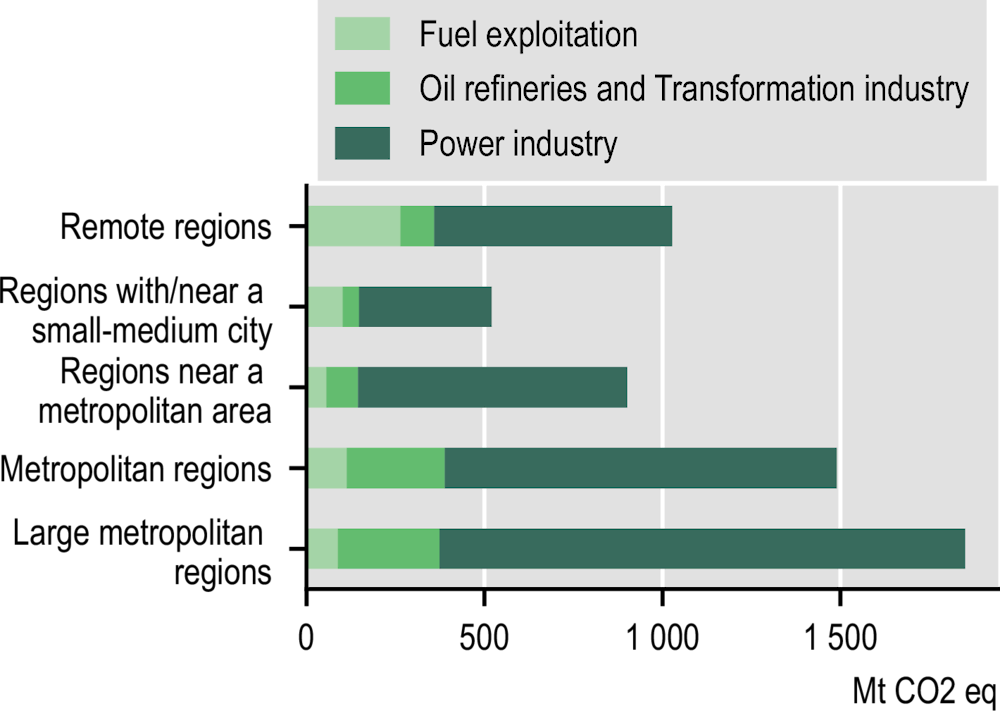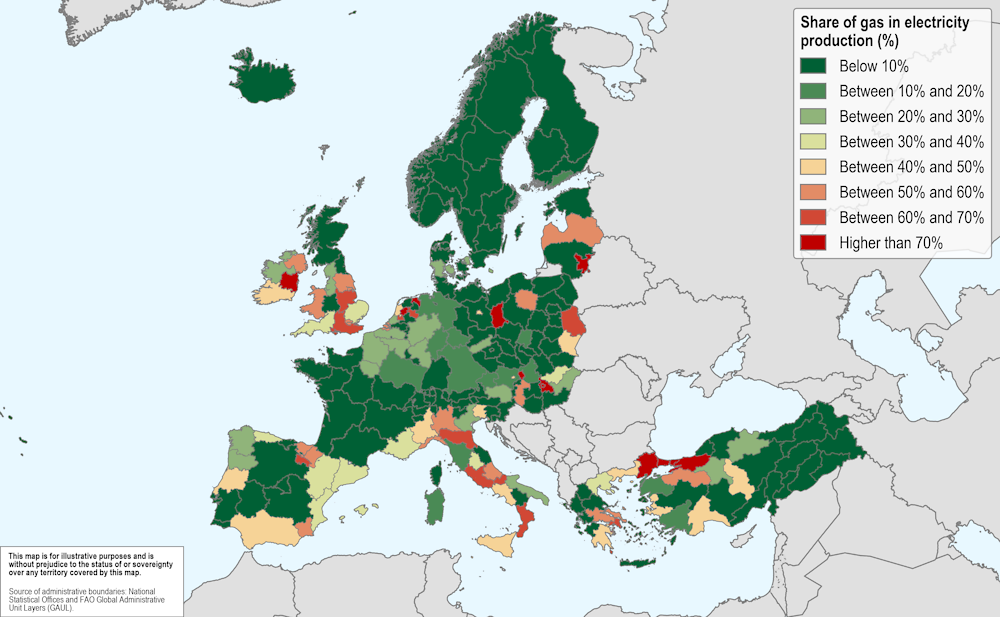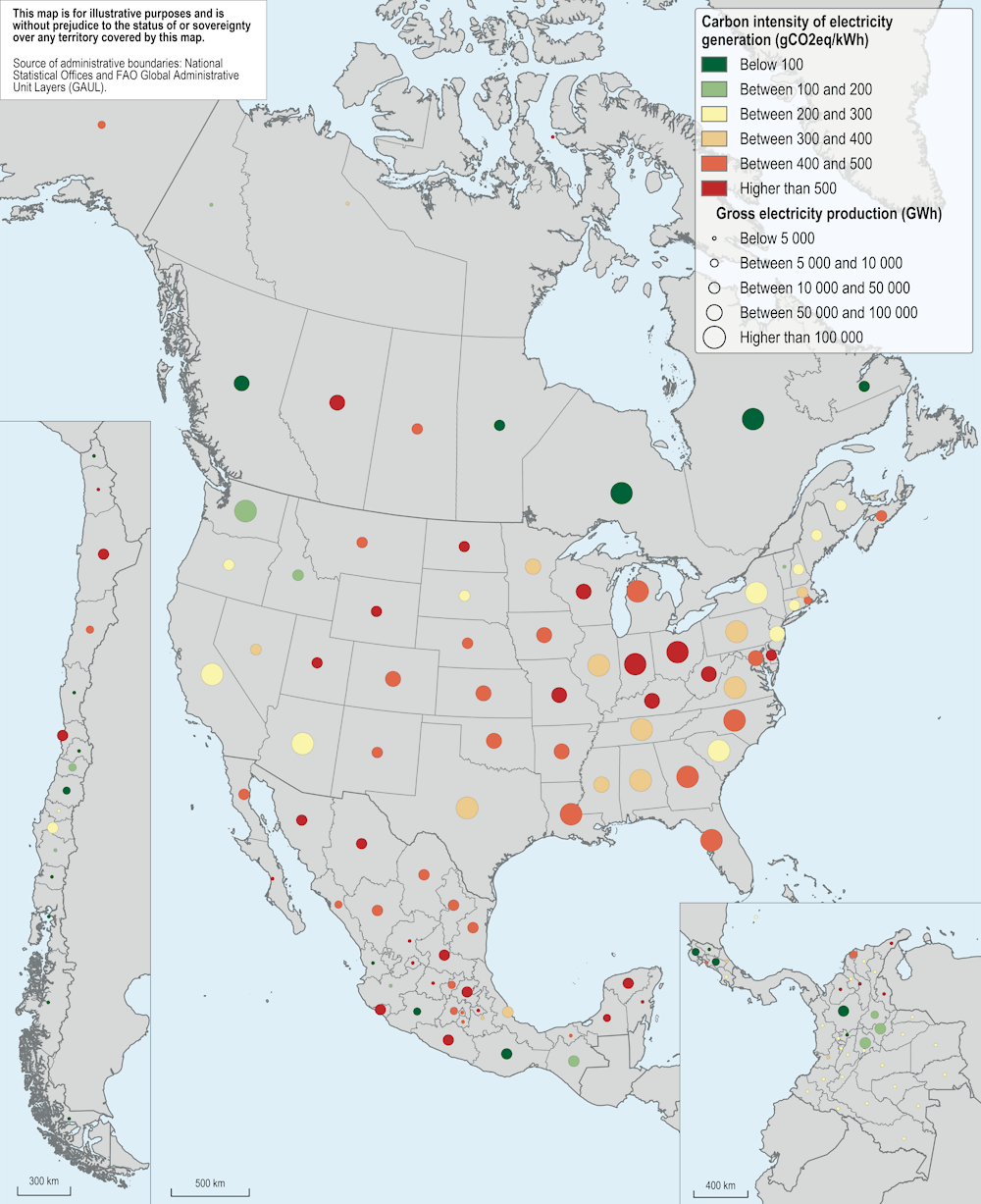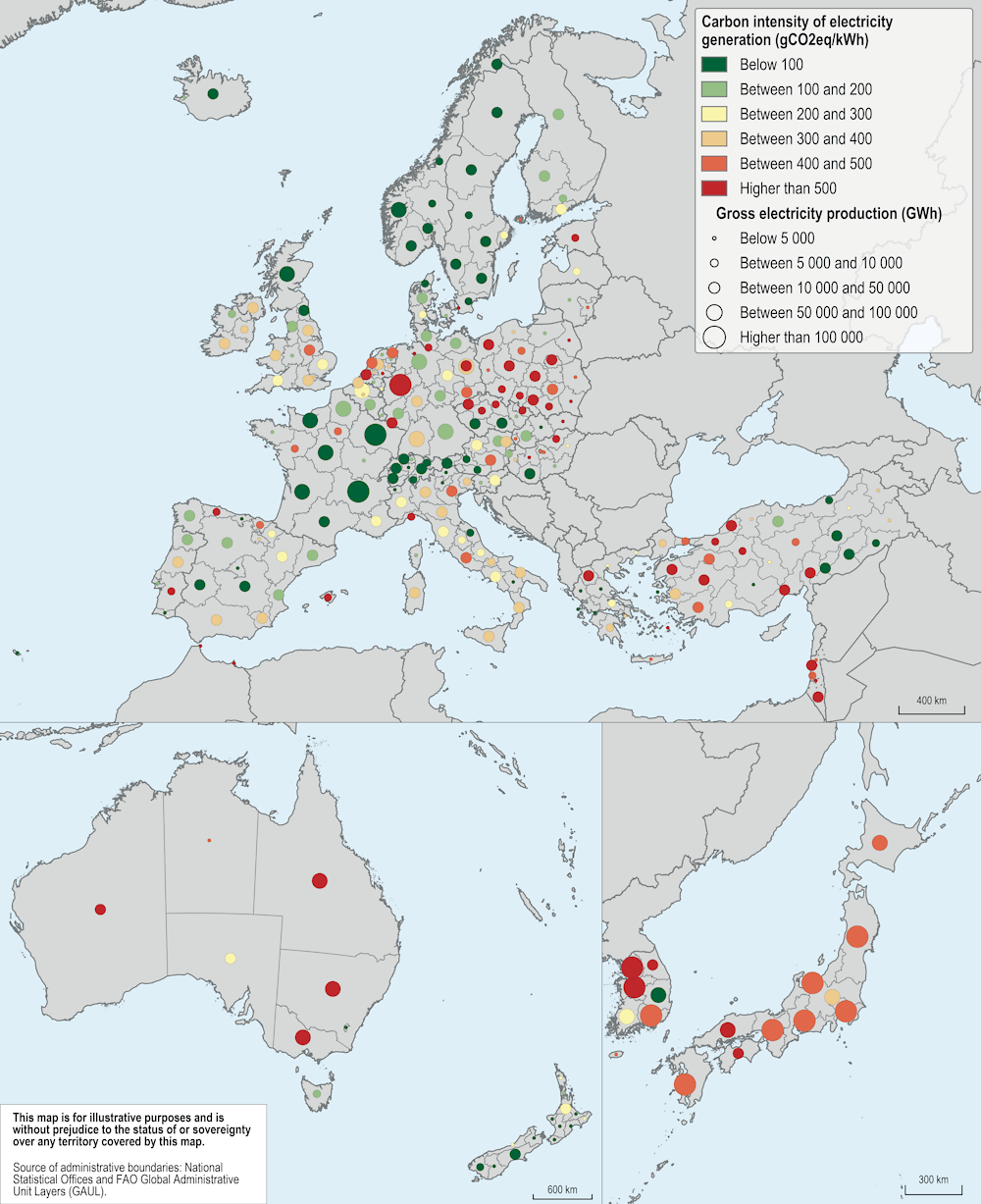Many OECD regions are still lagging in clean electricity generation.
Energy-related GHG emissions (from energy extraction, transformation and production) account for the largest share of production-based emissions across OECD countries (38% in 2018). The power industry accounts for the largest percentage (76%) of emissions in these activities, followed by oil refineries and transformation industry (14%) and fuel exploitation (11%). Since 1990, energy emissions have increased in almost two-thirds of OECD large regions.
Within OECD countries, metropolitan regions accounted for 58% of all energy-related emissions in 2018, 59% of emissions from power production and 71% of emissions from energy transformation, while accounting for 70% of the population. Remote regions on the other hand (hosting only 10% of the population) accounted for 42% of emissions from fuel exploitation (Figure 2.5).
Remote regions on average generate cleaner power, with more than half of their electricity produced from renewable sources. Metropolitan regions, on the other hand, tend to produce more carbon-intensive electricity (from coal and other fossil fuels), which in large part reflects the large land requirements of renewable installations compared to thermal power plants. (Figure 2.6). Whilst it is important to understand these spatial differences in energy systems, not least to identify which regions (and workers) are most likely to be affected by the green transition, it is important to note that the consumption of electricity follows very different spatial patterns.
While over one-third of regions generate most of their electricity from low-carbon sources, more than 50 regions spread across 19 OECD countries still rely on coal for most of the electricity they generate. Quebec (Canada), Auvergne-Rhône-Alpes (France) and Scotland (UK) rely on more than 90% of their electricity from nuclear or renewable sources and emit less than 100 g of CO2 eq. per kWh of electricity generated – almost 4 times below the OECD average (350 g CO2-eq/kWh). The carbon intensity of electricity production varies considerably within most OECD countries. For example, in Mexico, 12 of the top 14 producing states rely on fossil fuel for at least 70% of their electricity but Chiapas and Oaxaca produce more than 90% of electricity from renewable sources (Figures 2.7, 2.8 and 2.9).
More than 50 OECD European regions rely on natural gas – in large part imported – for more than half of their electricity generation. In Germany for example, which imports more than 90% of its natural gas – of which half was from Russia before Russia’s war of aggression against Ukraine (IEA, 2021b) – several regions such as North Rhine-Westphalia are heavily dependent on gas for electricity generation. While gas consumption in OECD European countries has remained stable over the past 2 decades, natural gas production has been decreasing since 2004, accounting for only 65% of total gas consumption in 2019 (IEA, 2021a). In Europe, about 20 regions – including Budapest (Hungary), Groningen (Netherlands) and Lazio (Italy) – use gas for more than 60% of their electricity production (Figure 2.9).
Recent price shocks to natural gas have created steep increases in the cost of electricity production from gas, which may create, at least in the short term, challenges for the green transition, as gas is significantly less carbon-intensive per unit of energy than other fossil fuels such as coal. For example, in the region of Lublin, Poland, with high use of gas, electricity production is three times less carbon-intensive than in the Greater Poland region, which relies heavily on coal.





